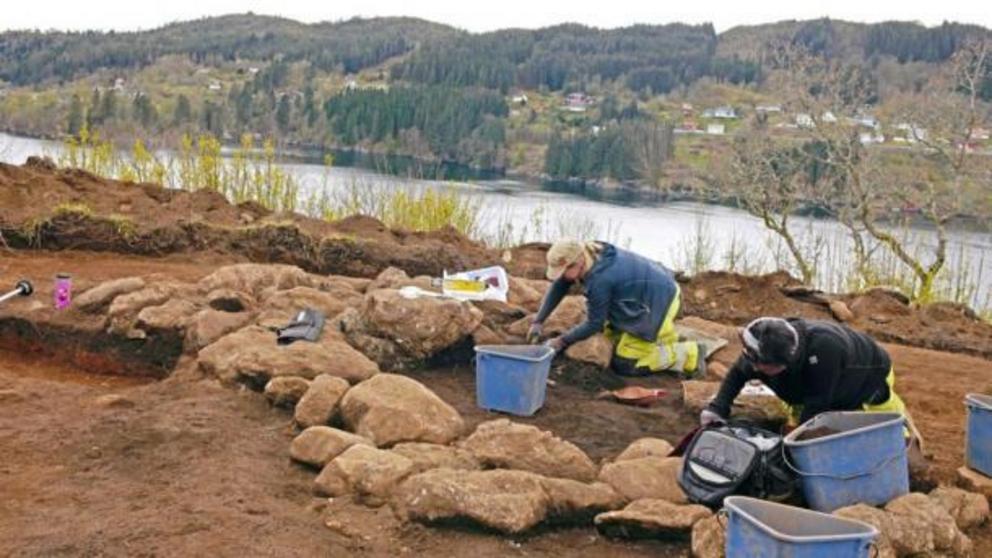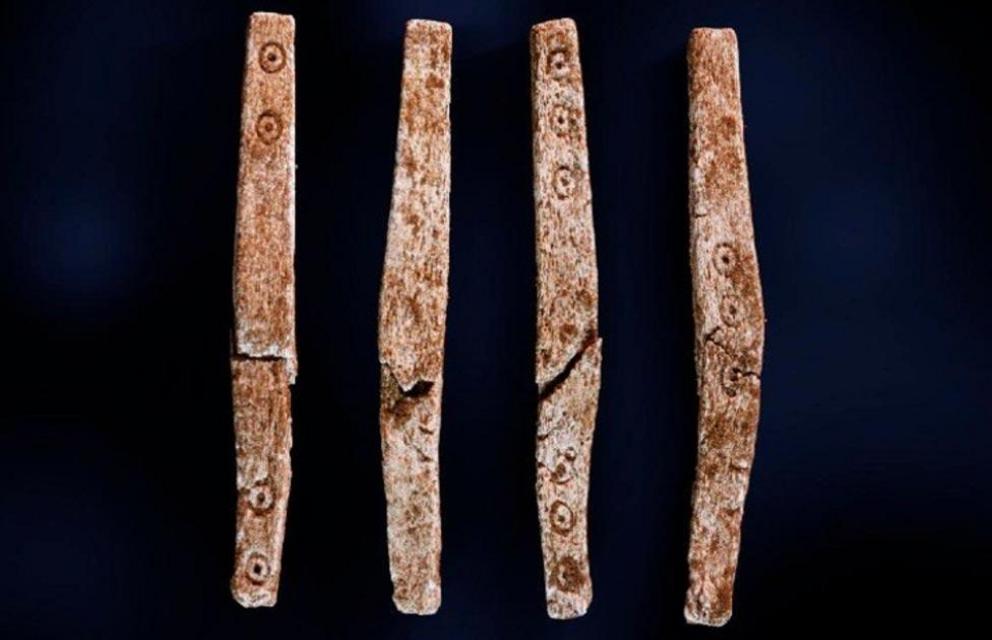Rare Roman game die unearthed at Norwegian burial cairn
Four-sided die from a Roman game found in Norway.
In April 2020, Norwegian archaeologists from the University Museum of Bergen were excavating the remains of a small Early Iron Age burial cairn near the village of Ytre Fosse, overlooking Alversund in western Norway. There, they discovered several fragments of broken pottery and burnt glass, but buried amidst these artifacts they also found a rare, elongated, Roman Iron Age (100-400 AD) die and board game playing pieces.
Historically, the nearby Alverstraumen straight was an important location on the ancient sea route between the north and south of Norway, named Nordvegen, “the northern way,” from which Norway takes its name. Dr. Morten Ramstad from Bergen University Museum told NRK that this discovery was “wonderfully exciting” because they found the whole game set which they believe would have been a status symbol owned by a “powerful person.” And while less than 15 such artifacts have ever been found in Norway, a set of similar dice were found in the famous Vimose weapon-offering site at Fyn in Denmark, which is helping interpret this new discovery.
 Archaeologist Cecilia Falkedahl and excavation leader Yvonne Dahl at the University Museum at the site. Elf stream in the background.
Archaeologist Cecilia Falkedahl and excavation leader Yvonne Dahl at the University Museum at the site. Elf stream in the background.
Only Elites Had The ‘Luxury’ Of Time For Strategic Thinking
The discovery included 13 whole and five broken game chips along with an almost completely intact elongated-die, and all of these pieces are described as being “very rare” dating from the Roman Iron Age , around AD 300. The bone debris, decorated pottery and burnt glass indicated to the archaeologists that the person who had been cremated and interred in the cairn was “likely a high-status elite,” and Dr. Morton said it was the gaming pieces that really highlighted his social standing more than any other discovery.
Speaking to Life In Norway the archaeologist explained that the gaming pieces were “status objects that testify to contact with the Roman Empire,” where only the elites, local aristocracy or upper classes played board games, displaying they had “the time, profits and ability to think strategically,” said Ramstad.
 The four-sided die.
The four-sided die.
The Ancient Origins Of Gaming
The ancient die is marked with several circumpuncts (dot in circle symbols) and they have the values zero, three, four and five. And already having researched the earlier discovery of the gaming pieces at Vimose in Denmark, the Norwegian archaeologists are able to deduce how such games might have been played in Scandinavia during the Roman Iron Age.
It is thought the game might have been based on the Roman game Ludus latrunculorum , which is itself believed to be a variant of earlier Greek games known variably as Petteia, pessoí, psêphoi, poleis and pente grammaí. In Plato's Republic Socrates' opponents are compared to “bad Petteia players, who are finally cornered and made unable to move” and in his Phaedrus we are told all such games originated in ancient Egypt from the game played like draughts called Seega.
 One of the 18 game pieces, obverse and reverse sides.
One of the 18 game pieces, obverse and reverse sides.
All of these games were early ancestors of the more famous board game Hnefataf, or Tafl games, which are a family of ancient Nordic and Celtic strategy board games played on a checkered or latticed gameboard with two sides, or armies, of uneven numbers. These games were played during the Viking Age for enjoyment and strategic training on long ocean voyages. And all this considered, "Finding a game that is almost two thousand years old is incredibly fascinating. It tells us that the people then were not so very different from us,” said Ramstad.
Mapping The Sphere Of Ancient Norwegian Trade
Archaeologist Louise Bjerre told Life In Norway that "This excavation connects Norway to a larger network of communication and trade in Scandinavia. At the same time, the findings can help us to understand the beginnings of the Iron Age in Norway.” And discovering a Roman game in a Norwegian elite’s grave will also add to what is known about the level to which Iron Age leaders warred, traded and integrated with incoming Roman culture .
The gaming pieces and the die will now go to the university lab in Bergen where a series of preservation techniques will be applied and the bones and other objects from the burial site will all eventually be exhibited to the public at the University of Bergen's Department of Cultural History Museum, which exhibits objects from Norwegian prehistory including folk art, church art, and ethnographic items from across western Norway.

